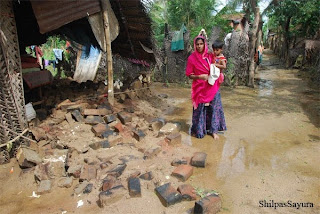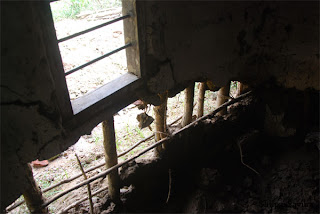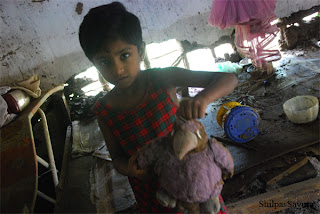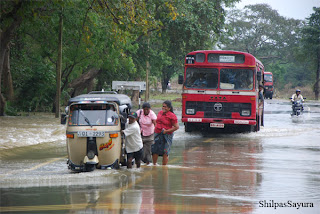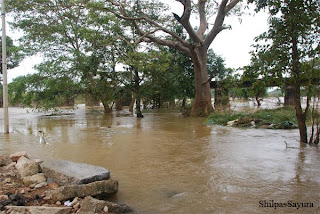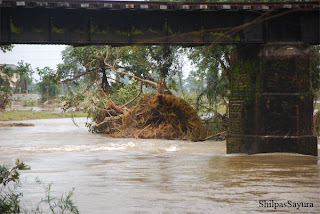This house is in the village of Magulpokuna, about 4km from Welikanda, in pollonaruwa district, by the border of Batticaloa. This is a typical mud house in a village. They are build from mud and wood. Some leave roofed. Some tin roofed. Usually they are built strong by following many thousands of years of mud house building traditions.
The damage is the collapsing of part of the wall. The picture also show tiny stream of water flowing by the wall. The second image show how the errossion has occured due to the stream. We dont think that the errosion occured only by rain in January. It would have been their unknown to the dwellers of the house.
This is a dissater prone house in the lowland of the village. This dissaster although look small, if the structure collapsed when people are in the house, would have been a sad story. These kinds of dissaster can be avoided by making people aware of dissaster readyness to craete a dissaster ressilience villages, homes and people. If they knew that there is a potentail dissaster coming, they would have prepared. Now the climate is changing is sure, we need to develop dissaster readyness. In which education can be a great help.
This is a dissater prone house in the lowland of the village. This dissaster although look small, if the structure collapsed when people are in the house, would have been a sad story. These kinds of dissaster can be avoided by making people aware of dissaster readyness to craete a dissaster ressilience villages, homes and people. If they knew that there is a potentail dissaster coming, they would have prepared. Now the climate is changing is sure, we need to develop dissaster readyness. In which education can be a great help.
However poor people lack time to look after their own houses and environment as they mostly live from days work at other peoples. Many do not own their own farmlands, but work in other peoples agriculture.As the village was not flooded, these kind of damages go unnoticed and the number of affected families are less than 5. However we need a system to asses small cases like this and help them with economic and livelihood re-building initiatives.

The main rain damages to this village is on agriculture. Their farms although looked green from distance, much of the seeds have fallen and washed with heavy rain, or become void (boll). Due to the rain that kept falling since end november, the plants were not able to become more bushy and to increase no of paddy seeds. It is unlikely for them to cultivate again in this season as the season is much gone. They were to obtain harvest by end feburuary to marh and prepare for the New Year in April before cultivating in next season. .


















